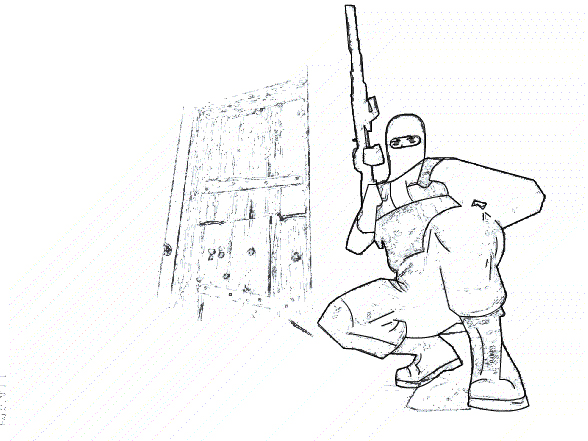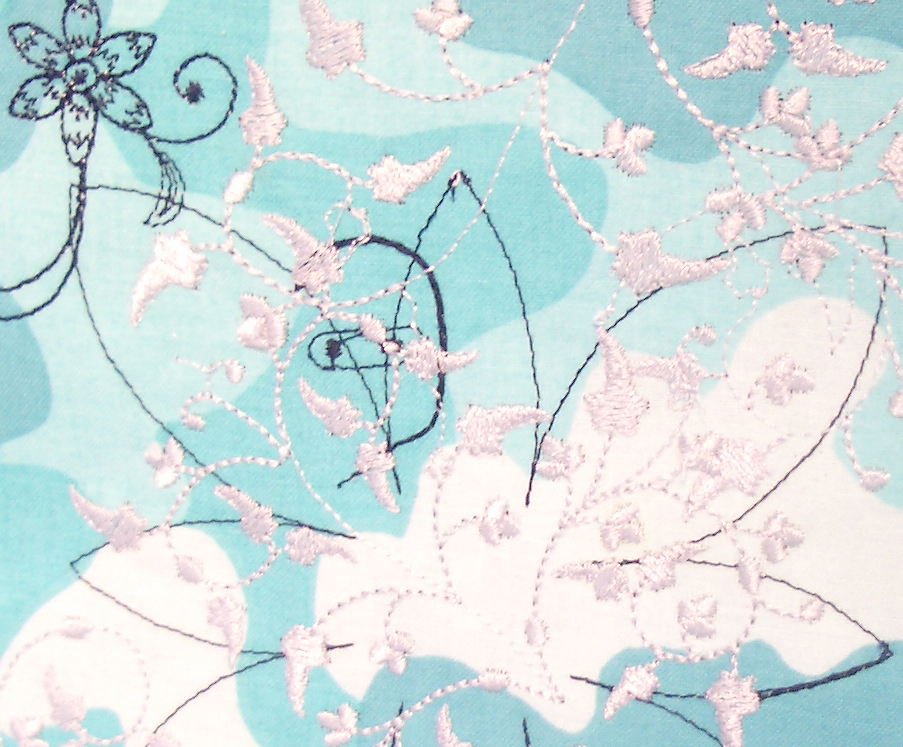


[from the ranks]
series, textile, performance
dimensions variable
2007
This project takes images from 3D war games, and in particular, America’s Army, translates the images into embroidery that adorns clothing and home goods. I’m interested in the blurriness between the digital and the analog, where digital art is nomadic and the digital sinks into our physical world.
The images in [from the ranks] were rendered using computerized embroidery machines, giving a domesticated and homespun subtext to the original digital images of war and violence. Often the images were of casualties, failing health bars, masked militia. In exhibition, the embroidered works are displayed as mixture of framed works and utilitarian objects like camoflage T-shirts and are indistinguishable from sewn materials generated by the human hand.
All the materials for the works were collected at second hand stores or purchased at WalMart, the store second only to the PX in popularity among military families.
I come from a family with a long history of service in the US military, beginning with a great great grandfather who served during the Civil War, my father, brother, uncles– and even my niece. I never really questioned taking the The Armed Forces Vocational Aptitude Battery (ASVAB) in high school. It was the closest thing I had to an college entrance exam, until I learned the difference.
During an artist’s residency on the Georgia Tech campus in Atlanta (home to Moody Air Force Base, Fort Gillem, Fort McPherson, Dobbins Air Reserve Base and the Atlanta Naval Air Station) and thinking a lot about the role of the military from the service side, I started playing the online video game America’s Army, created by the US Army for recruiting purposes. The context made sense being in the South, 40% of all military enlistees come from the southern US states (1). Cultural theorist Paul Virilio suggested “…it was easier to understand the Gulf War by buying American video games than by watching the news on television…We didn’t see concrete events…but we did see war transformed into a video game, with the same image repeated over and over…” (2).
References
1 Tyson, Ann Scott (4 Nov 2005) “Youths in Rural U.S. Are Drawn To Military.” The Washington Post. Accessed August 14 2019.
2 Sans, Jérôme (2000) “The Game of Love and Chance: A Discussion with Paul Virilio.” Accessed August 14 2019.
Exhibitions
- Skiles Gallery, Georgia Institute of Technology, Atlanta, Georgia, 2007
